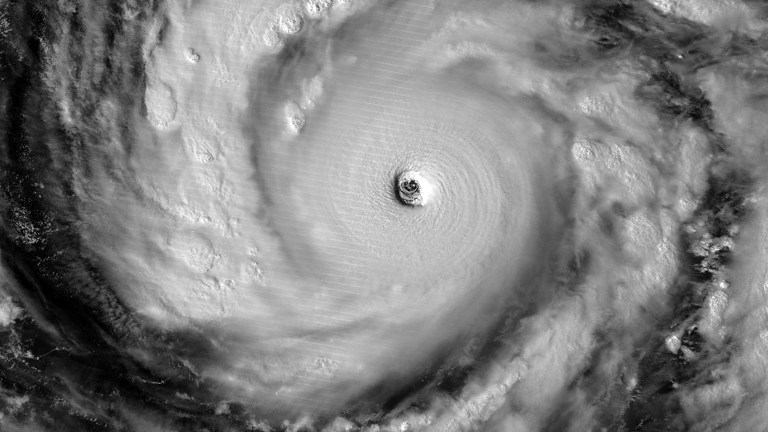
This image of Super Typhoon Vongfong using NASA’s Visible Infrared Imaging Radiometer Suite (VIIRS), obtained October 8, 2014 courtesy of NOAA/NASA/RAMMB/CIRA, shows the storm illuminated by moonlight. AFP
MANILA, Philippines — Super Typhoon “Ompong” (international name Vongfong), this year’s most powerful storm, will spare the Philippines with its strong winds and torrential rains, the weather bureau said Wednesday.
The super typhoon packed maximum sustained winds of 215 kilometers per hour and gusts of up to 250 kph, the Philippine Atmospheric Geophysical and Astronomical Services Administration said.
Ompong, which is currently heading towards southern Japan, will spare the Philippines with its strong winds and torrential rains even if it is within the Philippine area of responsibility. Pagasa said it will not have any direct effect to the country.
It was last observed 1,080 kilometers east of Tuguegarao City, moving west northwest at 17 kph.
“Super Typhoon Vongfong has become the strongest tropical cyclone of 2014 after intensifying rapidly overnight Monday into Tuesday, US time,” US-based The Weather Channel reported.
“It’s safe to say Vongfong is the strongest storm on earth since Haiyan last year,” said Michael Lowry, storm specialist for The Weather Channel.
At its peak, Super Typhoon “Yolanda” (Haiyan), was the strongest typhoon for 2013, packed maximum sustained winds of 235 kilometers per hour with gusts of up to 275 kph. It killed about 6,000 people when it hit Central Philippines.
Based on tracks, Ompong has the same path with Typhoon “Neneng” (international name Phanfone) which made landfall in Japan early this week.
Originally posted: 2:13 pm | Wednesday, October 8th, 2014
RELATED STORIES
Typhoon ‘Ompong’ intensifies, slows down
‘Ompong’ enters Philippines but won’t make landfall–Pagasa
RELATED VIDEOS